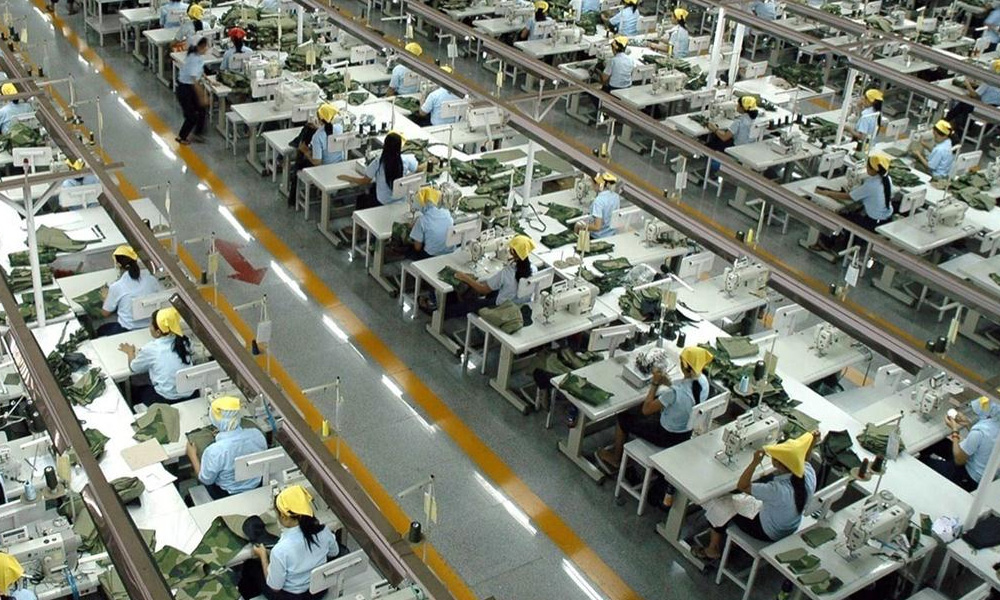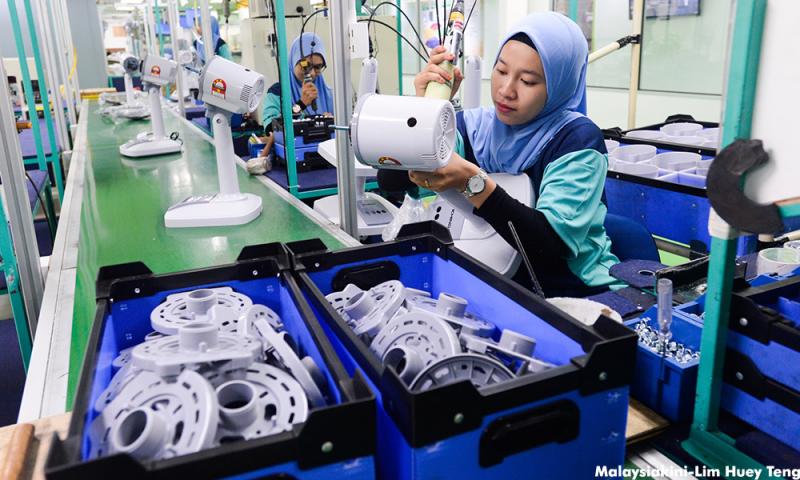Key challenges and opportunities for E&E industry in Malaysia
MP SPEAKS | In part 1 of my statement, I explained the importance of the E&E industry to the larger Malaysian economy and how this sector has evolved over time.
In Part 2, I will highlight some of the key challenges and opportunities for this sector in Malaysia in the context of global trade and economic uncertainties.
Capturing new and higher value-added investments from existing players
An investment by a new company worth RM100m, especially if it is a well-known global brand, can generate more publicity in Malaysia compared to a re-investment by an existing player worth RM1 billion.
In some ways, this is understandable given our larger fascination with new, bright shiny objects compared to older and duller toys. But as the saying goes, “a bird in hand is (sometimes) worth two in the bush”, we shouldn’t forget the importance of existing players while we aggressively pursue new investments.
Many existing players in the E&E industry in Malaysia are well-known multinational companies (MNCs) with operations elsewhere. And these companies can choose between various locations, including Malaysia, for their future expansion plans.
The attractiveness of tax and other related incentives is one of the factors influencing global investment location decisions. The challenge is for the respective management teams in Malaysia to make a pitch to their global headquarters for these new investments.
The pushback from the Malaysian authorities which the local teams are facing is to show that their investments involve higher value-added products and processes deserving of new incentives.
In the long-run, the overall FDI contribution inflows in the E&E sector is well documented from increasing the level of economic complexity, to having a higher than average productivity growth compared to other industries and the gradual enriching of its workforce over time.
But on a case-by-case basis, many MNCs face an alternative narrative saying Malaysia is generous and not discerning enough with regards to its tax incentives, leading to some MNCs seemingly enjoying reinvestment allowances in perpetuity.
The restructuring of the National Committee of Investments (NCI) to process the various investment incentives applications with co-chairs from MITI and MOF should increase the processing speed and approvals rate of some of the existing MNCs’ applications.
But more needs to be done to capture the opportunities from investment relocation and diversification resulting from the US-China trade and technology conflict.
Growing the technology and R&D base of Large Local Companies (LLCs) and supporting SMEs
While taking advantage of opportunities to capture additional investments from existing MNCs, we must also give due attention to growing and strengthening LLCs and supporting SMEs in this sector.
The impression that the government gives disproportionate attention, incentives and grants to the MNCs should be corrected. LLCs have and will continue enjoying access to matching grants from the MIDA-administered Domestic Investment Strategic Fund (DISF), which has supported R&D and training activities for many local companies in the E&E sector.

Government and industry partnerships to grow the LLCs’ R&D and technology base in the E&E sector will continue so that the LLCs can continue to move up the value chain.
Indeed, many LLCs are already investing their own resources in R&D-related activities as part of their services to their MNC customers and part of their internal strategy to expand activities beyond the contract manufacturing scope.
The challenge here is to align the speed of DISF grant approval and disbursement with the LLCs’ investment and production timeframes.
At the SME level, many government programs and initiatives moving forward will be related to Industry 4.0.
The focus here is getting the local SMEs to adopt Industry 4.0 pillars systematically so that productivity and manufacturing process quality can be enhanced. The challenge is getting ownership and top management buy-in to start their Industry 4.0 journey since many are still reluctant to move towards this direction.
Talent development at R&D and technician & operator levels
One consistent area of industry feedback is the talent shortage in the E&E sector both at the top and bottom ends. Linked to the talent issue is the demand for foreign labour.
In the short term, there are a few initiatives which can be undertaken to address the E&E industry talent shortage.
More dual training and learning programmes can be introduced to make jobs in this sector more attractive to potential machine operators and technicians.
Have more industrial training and learning programmes that expose students to practical hands-on knowledge and allow them to be paid while studying. This is also a good job-matching opportunity for companies involved in such programmes.
More private sector trainers and providers should be encouraged to enter this field. Dreamcatcher, a Penang-based company providing technical training to the E&E industry, also has TVET specific programmes.
MITI is also working with the Human Resources Ministry to introduce Industry 4.0-specific courses and programmes. Such programmes will also benefit the E&E industry from a talent development perspective.
It would be useful if a more complete and holistic career development pathway can be mapped out for operators and technicians so career progression can be understood from the beginning. With greater automation, their skill set and wages will also increase in tandem.

At the top end, public and private sector initiatives, such as the Innovate Malaysia Design competition geared towards the E&E industry, can be proliferated to recruit talented engineers into the industry.
The government is always open to new ideas in this area for win-win solutions to be identified. Having concrete proposals is far more useful than just complaining about the lack of talent in the industry.
Integrating various players from China into local E&E ecosystem
Chinese capital and investments in the E&E industry have already come to Malaysia albeit using different business models.
Tongfu Microelectronics (TFME), listed on the Shenzhen Stock Exchange, acquired AMD’s operations in Penang in 2016 and has steadily increased its investments and production in Penang.
This is the Mergers and Acquisition (M&A) model of investment where an existing facility and operations are acquired by a China-based entity. More recently, in 2018 a Hong Kong-listed company offering electronic manufacturing services (EMS), VTech, acquired the factory operations of Pioneer Corporation based in Muar, Johor.
The number and amount of Chinese investments in this industry are expected to grow significantly as a result of the US-China trade and technology conflict, which is not likely to abate anytime soon.
Malaysia must find ways to integrate these Chinese E&E players into the local ecosystem so that they can grow together with the existing MNCs and LLCs.
Adjusting to global supply and value chain shifts
In the past, when the globalisation trend was expected to continue unabated, the global supply and value chains were expected to become more complex, diversified and long as logistics and communication costs decreased significantly.
But according to a recent report in The Economist, the global supply chain is expected to undergo significant transformation including becoming shorter, smarter and faster.
In Malaysia, we have to keep track of and anticipate how these trends will play out domestically.

We may not, for example, be able to capture the more labour intensive portions of the Apple value chain that was reported to be partly relocating out of China but we can benefit in higher technology areas such as providing the machines to test the various components which go into the iPhones.
We should expect more disruptions in this space in the face of greater global uncertainties to the trade and investment climate. We may gain from some of these shifts as the Asian economies are still the fastest growing in the world and if regional supply chains are created because of these trade and investment frictions.
More Strategic Industry Research, Advocacy and Promotion
Lastly, even though the E&E industry in Malaysia has grown by leaps and bounds over the years, the level of strategic industry research, advocacy and promotion, both domestically and internationally, can be improved significantly.
The E&E Productivity Nexus (EEPN) under the Malaysian Productivity Corporation (MPC) has undertaken a number of initiatives to push for the development of the industry as a whole.
Other strategic initiatives include collaborative academic research to showcase the achievements and document some of the challenges faced by the industry in Malaysia.
Media exposure, industry newsletters and educational institution engagement are among some of the initiatives which can be enhanced.
Although some industry players realise the strategic importance of Malaysia, and particularly Penang to the global E&E ecosystem, more work is needed to promote and sell it overseas.
The challenges are many but so are the opportunities. The work has to be sped up.
ONG KIAN MING is Bangi MP and assistant national director for political education for DAP.
The views expressed here are those of the author/contributor and do not necessarily represent the views of Malaysiakini.
RM12.50 / month
- Unlimited access to award-winning journalism
- Comment and share your opinions on all our articles
- Gift interesting stories to your friends
- Tax deductable
